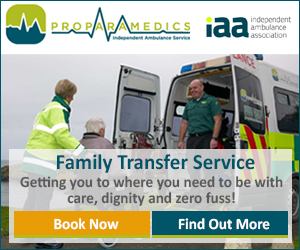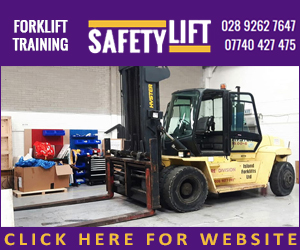13/05/2014
Nice Suggests More Midwife-Led Home Births
Women who are healthy and experiencing a 'straight forward' (low risk) pregnancy should be encouraged to give birth in a midwife-led unit rather than a traditional labour ward, according to draft proposals from the National Institute for Health and Care Excellence (NICE).
It also provisionally says that a home birth may be just as safe as hospital for low risk pregnant women who have already had at least 1 child, and that midwives should discuss all options with the women in their care. The proposed changes to the institute's guidance could affect hundreds of thousands of births.
NICE currently recommends that women should be given the choice of where they want to give birth, but urges caution if a home birth or delivery in a midwife-led unit is planned. The Institute is now revising its recommendations in light of new evidence. The draft version of these updated guidelines has been published for consultation.
Almost three-quarters of a million (729,000) babies were born in England and Wales during 2012 - a rise of about 20% from 2002.
Christine Carson, clinical guideline programme director for NICE, said: "Since we published our original guidance, more evidence has come to light about the benefits and risks associated with giving birth at home, in an independent or hospital-based midwife-led unit and on a traditional labour ward.
"We now know that these units are as safe as traditional labour wards for all 'low risk' pregnant women and are more likely to result in a better birth experience with less medical intervention. The evidence also highlights that home births are just as safe as other settings for low risk pregnant women who already have at least 1 child, but not for women expecting their first baby. However, every woman should ultimately have the freedom to choose where she wants to give birth and be supported in her choice."
(CVS/CD)
It also provisionally says that a home birth may be just as safe as hospital for low risk pregnant women who have already had at least 1 child, and that midwives should discuss all options with the women in their care. The proposed changes to the institute's guidance could affect hundreds of thousands of births.
NICE currently recommends that women should be given the choice of where they want to give birth, but urges caution if a home birth or delivery in a midwife-led unit is planned. The Institute is now revising its recommendations in light of new evidence. The draft version of these updated guidelines has been published for consultation.
Almost three-quarters of a million (729,000) babies were born in England and Wales during 2012 - a rise of about 20% from 2002.
Christine Carson, clinical guideline programme director for NICE, said: "Since we published our original guidance, more evidence has come to light about the benefits and risks associated with giving birth at home, in an independent or hospital-based midwife-led unit and on a traditional labour ward.
"We now know that these units are as safe as traditional labour wards for all 'low risk' pregnant women and are more likely to result in a better birth experience with less medical intervention. The evidence also highlights that home births are just as safe as other settings for low risk pregnant women who already have at least 1 child, but not for women expecting their first baby. However, every woman should ultimately have the freedom to choose where she wants to give birth and be supported in her choice."
(CVS/CD)
Related UK National News Stories
Click here for the latest headlines.
17 February 2004
UK sees 20% increase in multiple births over 10 years
Mothers are having 20% more multiple births than they were a decade ago, according to figures released today by the Office for National Statistics (ONS). Statistics have revealed that in 2002, the multiple birth rate was 15 per 1,000 women giving birth, compared with 12.5 in 1992.
UK sees 20% increase in multiple births over 10 years
Mothers are having 20% more multiple births than they were a decade ago, according to figures released today by the Office for National Statistics (ONS). Statistics have revealed that in 2002, the multiple birth rate was 15 per 1,000 women giving birth, compared with 12.5 in 1992.
03 December 2014
Home Births Best For Mothers - NICE
More women are being urged to give birth at home or at midwife-led units rather than traditional labour wards. In updated guidance by the National Institute for Health and Care Excellence (Nice) evidence shows that midwife-led care is safer than hospital care for women having a straightforward, low risk, pregnancy.
Home Births Best For Mothers - NICE
More women are being urged to give birth at home or at midwife-led units rather than traditional labour wards. In updated guidance by the National Institute for Health and Care Excellence (Nice) evidence shows that midwife-led care is safer than hospital care for women having a straightforward, low risk, pregnancy.
21 July 2010
Preterm Births 'More Common' Among Obese
Overweight and obese women are at greater risk of giving birth to a preterm baby, compared with normal weight women, a study published on bmj.com has revealed.
Preterm Births 'More Common' Among Obese
Overweight and obese women are at greater risk of giving birth to a preterm baby, compared with normal weight women, a study published on bmj.com has revealed.
23 November 2011
C-Section Guidelines Revised
The guidelines covering caesarean section births have been changed, giving women the option to give birth by the operation if they are suffering from anxiety over the delivery.
C-Section Guidelines Revised
The guidelines covering caesarean section births have been changed, giving women the option to give birth by the operation if they are suffering from anxiety over the delivery.
26 May 2010
Birthrates 'Treble' For Older Mothers
Figures have shown that the number of births to older mothers has trebled in the past 20 years. In 2009, figures for England and Wales show that 26,976 babies were born to women aged 40 and over, compared to 9,336 in 1989 and 14,252 in 1999. Among those aged 35 to 39 there were 114,288 births in 2009, a rise of 41% on the 81,281 in 1999.
Birthrates 'Treble' For Older Mothers
Figures have shown that the number of births to older mothers has trebled in the past 20 years. In 2009, figures for England and Wales show that 26,976 babies were born to women aged 40 and over, compared to 9,336 in 1989 and 14,252 in 1999. Among those aged 35 to 39 there were 114,288 births in 2009, a rise of 41% on the 81,281 in 1999.
-
Northern Ireland WeatherToday:A sunny but frosty start for many. However cloud increases by midday with a few showers reaching the north coast, these mostly light but spreading inland this afternoon. Chilly. Maximum temperature 8 °C.Tonight:A rather cloudy evening with scattered showers. Becoming drier through the night with some good clear spells developing and a patchy frost away from coasts. Minimum temperature 0 °C.








